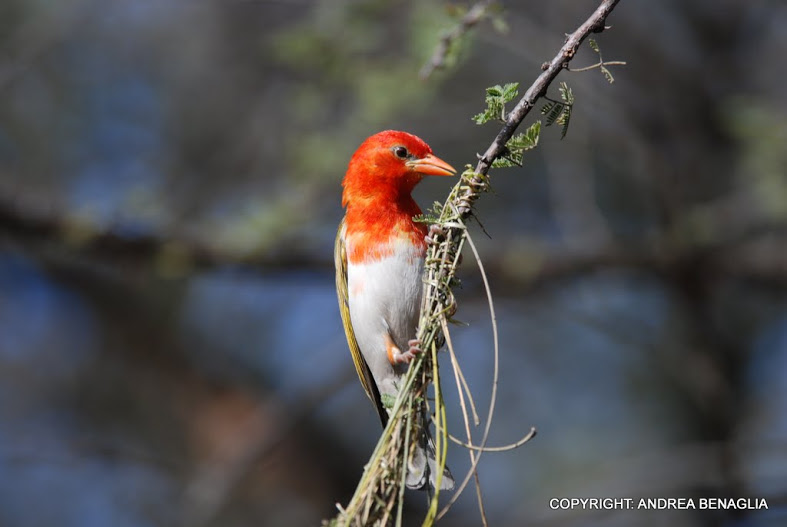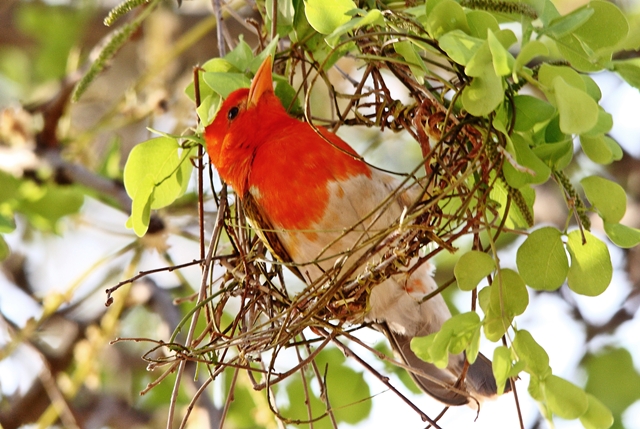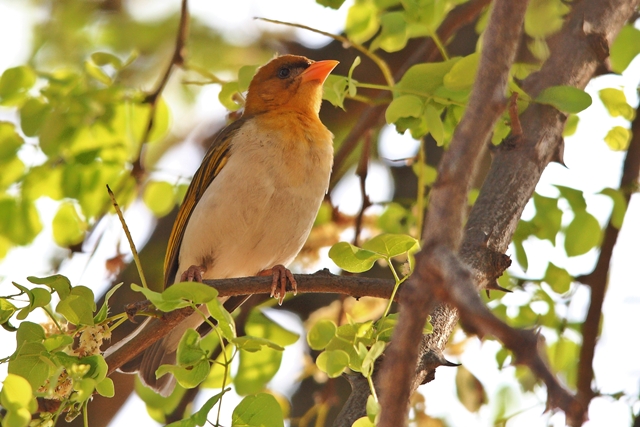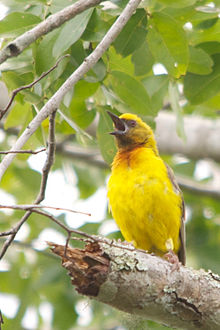
WEAVERS - BIRD OF THE MONTH - JUNE & JULY 2014*
- Lisbeth
- Site Admin
- Posts: 67388
- Joined: Sat May 19, 2012 12:31 pm
- Country: Switzerland
- Location: Lugano
- Contact:
Re: WEAVERS - BIRD OF THE MONTH - JUNE 2014
The Olive-headed Weaver (Ploceus olivaceiceps) is a species of bird in the Ploceidae family. It is found in Malawi, Mozambique, Tanzania, and Zambia. Its natural habitat is subtropical or tropical dry forests. It is threatened by habitat loss.


"Education is the most powerful weapon which you can use to change the world." Nelson Mandela
The desire for equality must never exceed the demands of knowledge
The desire for equality must never exceed the demands of knowledge
- Lisbeth
- Site Admin
- Posts: 67388
- Joined: Sat May 19, 2012 12:31 pm
- Country: Switzerland
- Location: Lugano
- Contact:
Re: WEAVERS - BIRD OF THE MONTH - JUNE 2014
Genus Anaplectes
Red-headed Weaver, Anaplectes rubriceps
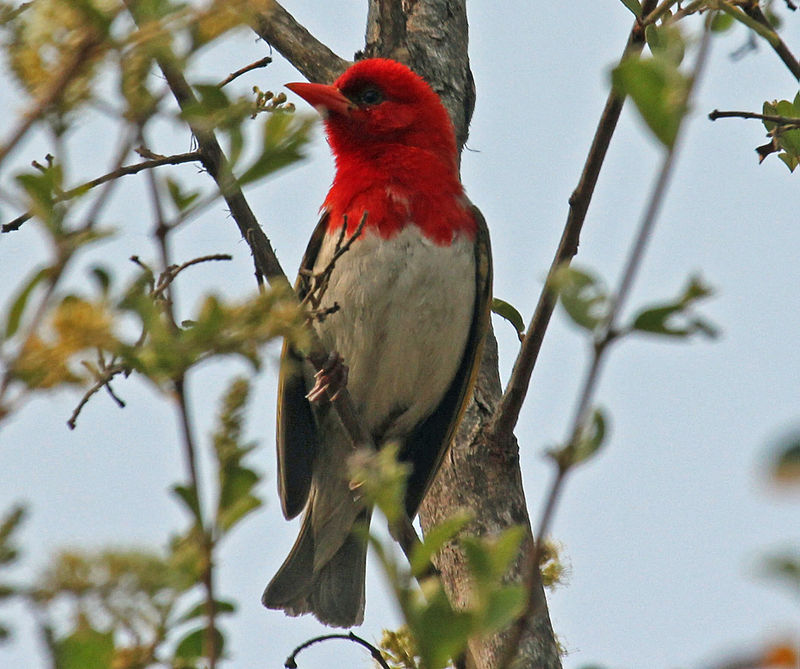
Description
Length 13-15cm, weight 17-26g.
The vivid red head, breast and mantle of the breeding male Red-headed Weaver are diagnostic. Red thin bill. White underparts.
Females and non breeding males havea bright yellow head with orange bill and a clear white belly.
Distribution
Occurs across much of sub-Saharan Africa, excluding the lowland forests of West Africa and central DRC, from Senegal to Somalia south to southern Africa. Here it is uncommon to fairly common from north-eastern Namibia through northern and eastern Botswana to Zimbabwe, Mozambique and north-eastern South Africa.
In West and East Africa the male has a black mask; one race in East Africa has a red plumage.
Habitat
It generally prefers broad-leaved (especially miombo (Brachystegia) woodland, Acacia savanna, bushveld and gardens, usually of farms.
Diet
It mainly eats arthropods, supplemented with seeds and fruit, gleaning food from the foliage of trees, bushes and creepers. It also hawks insects aerially and plucks spiders from their webs, often joining mixed species foraging flocks.
Breeding
Monogamous but sometimes polygynous, as one male may mate with multiple females within a colony. The nest is built solely by the male, consisting of an upside-down bottle-shaped structure (i.e. an rough oval with a vertical entrance hole at the base) made of leaf midribs, twigs, grass stems, broad leaves and tendrils (rather than green grass as in most Ploceus weavers). Once it is approved by the female she lines the interior with bark fibres, feathers, dry grass or leaves. It is typically strung from a few twigs beneath the canopy of a tree, such as the Baobab (Adansonia digitata), but it also regularly uses man-made objects such as windmill vanes, telephone wires and edge of thatched roofs. It often nests in the vicinity of other weaver species or even raptors such the African Hawk-eagle (Aquila spilogaster). Egg-laying season is from July-February, peaking from September-November. It lays 1-4 eggs, usually 2-3 eggs, which are incubated mainly by the female for about 12-13 days. The chicks are fed by both sexes but mostly the female, leaving the nest after roughly 17 days.
Red-headed Weaver, Anaplectes rubriceps

Description
Length 13-15cm, weight 17-26g.
The vivid red head, breast and mantle of the breeding male Red-headed Weaver are diagnostic. Red thin bill. White underparts.
Females and non breeding males havea bright yellow head with orange bill and a clear white belly.
Distribution
Occurs across much of sub-Saharan Africa, excluding the lowland forests of West Africa and central DRC, from Senegal to Somalia south to southern Africa. Here it is uncommon to fairly common from north-eastern Namibia through northern and eastern Botswana to Zimbabwe, Mozambique and north-eastern South Africa.
In West and East Africa the male has a black mask; one race in East Africa has a red plumage.
Habitat
It generally prefers broad-leaved (especially miombo (Brachystegia) woodland, Acacia savanna, bushveld and gardens, usually of farms.
Diet
It mainly eats arthropods, supplemented with seeds and fruit, gleaning food from the foliage of trees, bushes and creepers. It also hawks insects aerially and plucks spiders from their webs, often joining mixed species foraging flocks.
Breeding
Monogamous but sometimes polygynous, as one male may mate with multiple females within a colony. The nest is built solely by the male, consisting of an upside-down bottle-shaped structure (i.e. an rough oval with a vertical entrance hole at the base) made of leaf midribs, twigs, grass stems, broad leaves and tendrils (rather than green grass as in most Ploceus weavers). Once it is approved by the female she lines the interior with bark fibres, feathers, dry grass or leaves. It is typically strung from a few twigs beneath the canopy of a tree, such as the Baobab (Adansonia digitata), but it also regularly uses man-made objects such as windmill vanes, telephone wires and edge of thatched roofs. It often nests in the vicinity of other weaver species or even raptors such the African Hawk-eagle (Aquila spilogaster). Egg-laying season is from July-February, peaking from September-November. It lays 1-4 eggs, usually 2-3 eggs, which are incubated mainly by the female for about 12-13 days. The chicks are fed by both sexes but mostly the female, leaving the nest after roughly 17 days.
"Education is the most powerful weapon which you can use to change the world." Nelson Mandela
The desire for equality must never exceed the demands of knowledge
The desire for equality must never exceed the demands of knowledge
- Lisbeth
- Site Admin
- Posts: 67388
- Joined: Sat May 19, 2012 12:31 pm
- Country: Switzerland
- Location: Lugano
- Contact:
Re: WEAVERS - BIRD OF THE MONTH - JUNE 2014
Marloth - January
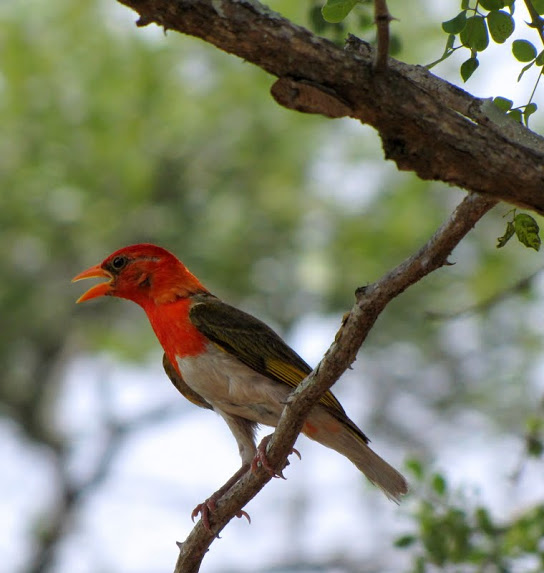

"Education is the most powerful weapon which you can use to change the world." Nelson Mandela
The desire for equality must never exceed the demands of knowledge
The desire for equality must never exceed the demands of knowledge
Re: WEAVERS - BIRD OF THE MONTH - JUNE 2014
Red-headed Weaver
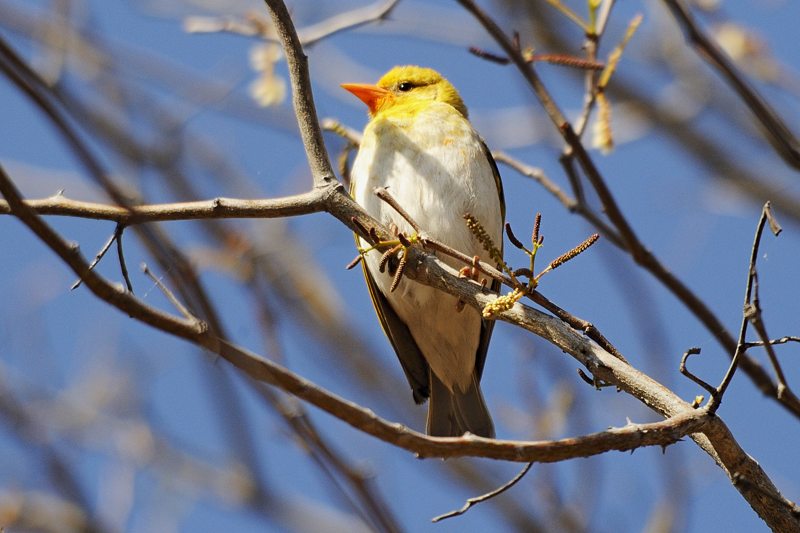
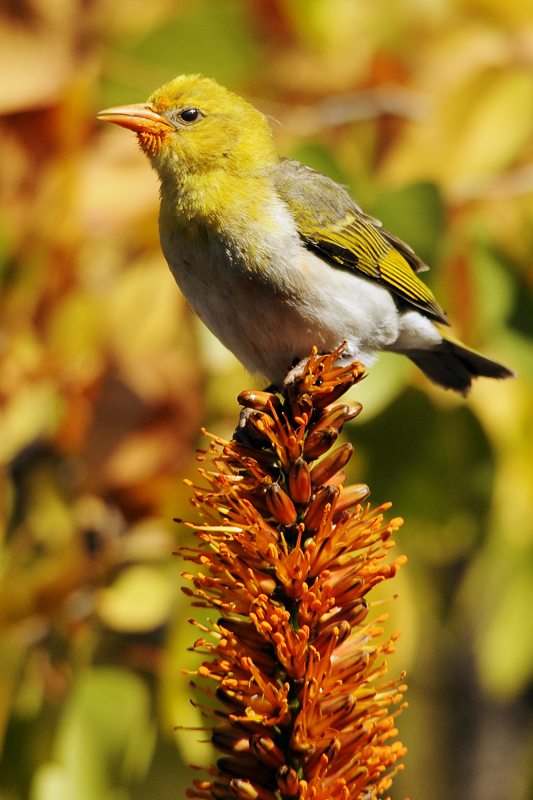
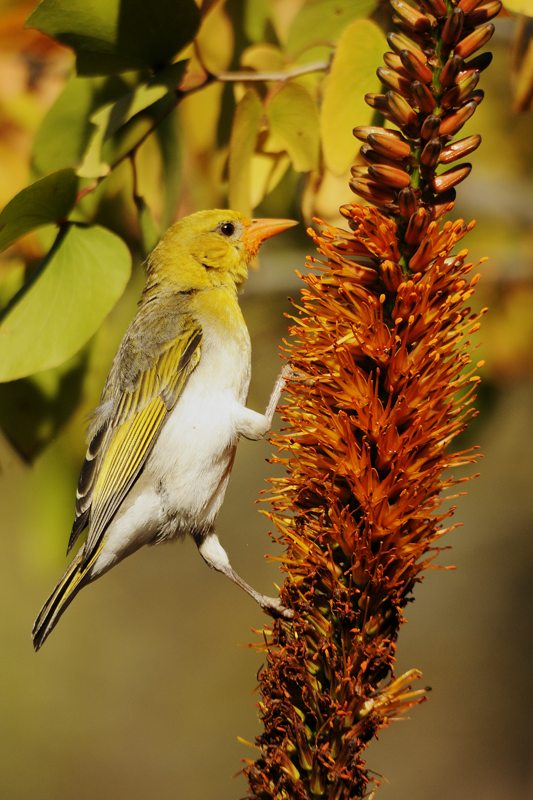
Non-breeding Male I think.
Shingwedzi.



Non-breeding Male I think.
Shingwedzi.
Dewi
What is the good of having a nice house without a decent planet to put it on? (H D Thoreau)
What is the good of having a nice house without a decent planet to put it on? (H D Thoreau)
- Amoli
- Posts: 6032
- Joined: Fri Jun 01, 2012 4:30 am
- Country: South Africa
- Location: Kempton Park
- Contact:
Re: WEAVERS - BIRD OF THE MONTH - JUNE 2014
I have one pic - taken in Barberton, April 2014
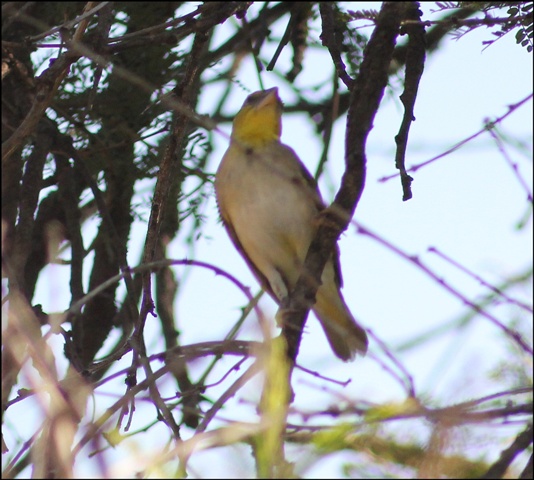

Pretoriuskop
Satara
Shingwedzi
20-30 Dec 2014
Satara
Shingwedzi
20-30 Dec 2014
- nan
- Posts: 26310
- Joined: Thu May 31, 2012 9:41 pm
- Country: Switzerland
- Location: Central Europe
- Contact:
Re: WEAVERS - BIRD OF THE MONTH - JUNE 2014
Red-headed Weaver
Kruger
 female 19.10.2009
female 19.10.2009
 27.10.2009
27.10.2009
Kruger
 female 19.10.2009
female 19.10.2009 27.10.2009
27.10.2009Kgalagadi lover… for ever
https://safrounet.piwigo.com/
https://safrounet.piwigo.com/
- Lisbeth
- Site Admin
- Posts: 67388
- Joined: Sat May 19, 2012 12:31 pm
- Country: Switzerland
- Location: Lugano
- Contact:
Re: WEAVERS - BIRD OF THE MONTH - JUNE 2014
Kruger - female red-headed weaver
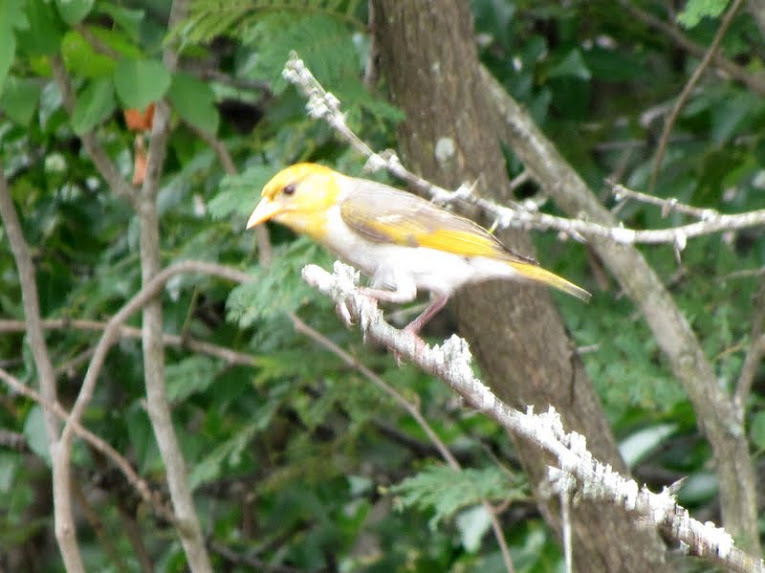
Kruger - Red-headed weaver, male
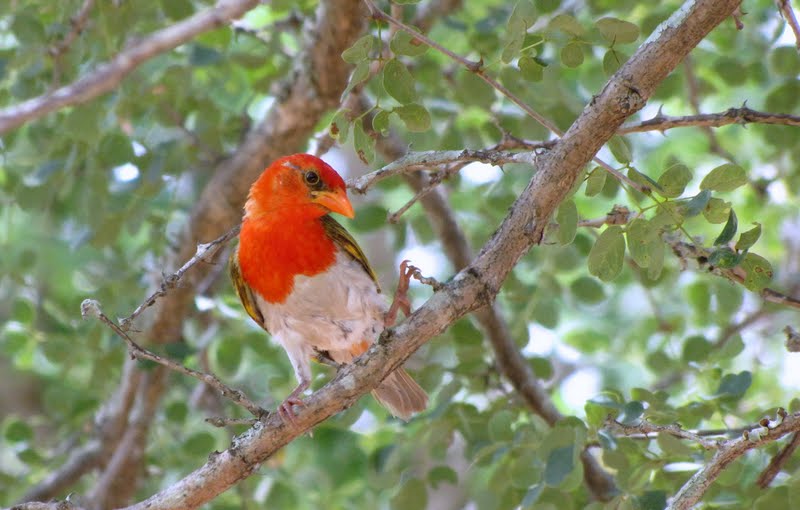

Kruger - Red-headed weaver, male

"Education is the most powerful weapon which you can use to change the world." Nelson Mandela
The desire for equality must never exceed the demands of knowledge
The desire for equality must never exceed the demands of knowledge
- Lisbeth
- Site Admin
- Posts: 67388
- Joined: Sat May 19, 2012 12:31 pm
- Country: Switzerland
- Location: Lugano
- Contact:
Re: WEAVERS - BIRD OF THE MONTH - JUNE 2014
Genus Quelea
The Red-headed Quelea (Quelea erythrops) is a species of bird in the Ploceidae family. It is found in Angola, Benin, Botswana, Burkina Faso, Burundi, Cameroon, Central African Republic, Chad, Republic of the Congo, Democratic Republic of the Congo, Ivory Coast, Equatorial Guinea, Ethiopia, Gabon, Gambia, Ghana, Guinea, Guinea-Bissau, Kenya, Liberia, Malawi, Mali, Mozambique, Niger, Nigeria, Rwanda, São Tomé and Príncipe, Senegal, Sierra Leone, South Africa, Sudan, Swaziland, Tanzania, Togo, Uganda, Zambia, and Zimbabwe.
Description
Length 13-15cm, weight 17-26g.
The vivid red head, breast and mantle of the breeding male Red-headed Weaver are diagnostic. Red thin bill. White underparts.
Females and non breeding males havea bright yellow head with orange bill and a clear white belly.
Distribution
Occurs across much of sub-Saharan Africa, excluding the lowland forests of West Africa and central DRC, from Senegal to Somalia south to southern Africa. Here it is uncommon to fairly common from north-eastern Namibia through northern and eastern Botswana to Zimbabwe, Mozambique and north-eastern South Africa.
In West and East Africa the male has a black mask; one race in East Africa has a red plumage.
Habitat
It generally prefers broad-leaved (especially miombo (Brachystegia) woodland, Acacia savanna, bushveld and gardens, usually of farms.
Diet
It mainly eats arthropods, supplemented with seeds and fruit, gleaning food from the foliage of trees, bushes and creepers. It also hawks insects aerially and plucks spiders from their webs, often joining mixed species foraging flocks.
Breeding
Monogamous but sometimes polygynous, as one male may mate with multiple females within a colony. The nest is built solely by the male, consisting of an upside-down bottle-shaped structure (i.e. an rough oval with a vertical entrance hole at the base) made of leaf midribs, twigs, grass stems, broad leaves and tendrils (rather than green grass as in most Ploceus weavers). Once it is approved by the female she lines the interior with bark fibres, feathers, dry grass or leaves. It is typically strung from a few twigs beneath the canopy of a tree, such as the Baobab (Adansonia digitata), but it also regularly uses man-made objects such as windmill vanes, telephone wires and edge of thatched roofs. It often nests in the vicinity of other weaver species or even raptors such the African Hawk-eagle (Aquila spilogaster). Egg-laying season is from July-February, peaking from September-November. It lays 1-4 eggs, usually 2-3 eggs, which are incubated mainly by the female for about 12-13 days. The chicks are fed by both sexes but mostly the female, leaving the nest after roughly 17 days.
The Red-headed Quelea (Quelea erythrops) is a species of bird in the Ploceidae family. It is found in Angola, Benin, Botswana, Burkina Faso, Burundi, Cameroon, Central African Republic, Chad, Republic of the Congo, Democratic Republic of the Congo, Ivory Coast, Equatorial Guinea, Ethiopia, Gabon, Gambia, Ghana, Guinea, Guinea-Bissau, Kenya, Liberia, Malawi, Mali, Mozambique, Niger, Nigeria, Rwanda, São Tomé and Príncipe, Senegal, Sierra Leone, South Africa, Sudan, Swaziland, Tanzania, Togo, Uganda, Zambia, and Zimbabwe.
Description
Length 13-15cm, weight 17-26g.
The vivid red head, breast and mantle of the breeding male Red-headed Weaver are diagnostic. Red thin bill. White underparts.
Females and non breeding males havea bright yellow head with orange bill and a clear white belly.
Distribution
Occurs across much of sub-Saharan Africa, excluding the lowland forests of West Africa and central DRC, from Senegal to Somalia south to southern Africa. Here it is uncommon to fairly common from north-eastern Namibia through northern and eastern Botswana to Zimbabwe, Mozambique and north-eastern South Africa.
In West and East Africa the male has a black mask; one race in East Africa has a red plumage.
Habitat
It generally prefers broad-leaved (especially miombo (Brachystegia) woodland, Acacia savanna, bushveld and gardens, usually of farms.
Diet
It mainly eats arthropods, supplemented with seeds and fruit, gleaning food from the foliage of trees, bushes and creepers. It also hawks insects aerially and plucks spiders from their webs, often joining mixed species foraging flocks.
Breeding
Monogamous but sometimes polygynous, as one male may mate with multiple females within a colony. The nest is built solely by the male, consisting of an upside-down bottle-shaped structure (i.e. an rough oval with a vertical entrance hole at the base) made of leaf midribs, twigs, grass stems, broad leaves and tendrils (rather than green grass as in most Ploceus weavers). Once it is approved by the female she lines the interior with bark fibres, feathers, dry grass or leaves. It is typically strung from a few twigs beneath the canopy of a tree, such as the Baobab (Adansonia digitata), but it also regularly uses man-made objects such as windmill vanes, telephone wires and edge of thatched roofs. It often nests in the vicinity of other weaver species or even raptors such the African Hawk-eagle (Aquila spilogaster). Egg-laying season is from July-February, peaking from September-November. It lays 1-4 eggs, usually 2-3 eggs, which are incubated mainly by the female for about 12-13 days. The chicks are fed by both sexes but mostly the female, leaving the nest after roughly 17 days.
"Education is the most powerful weapon which you can use to change the world." Nelson Mandela
The desire for equality must never exceed the demands of knowledge
The desire for equality must never exceed the demands of knowledge



